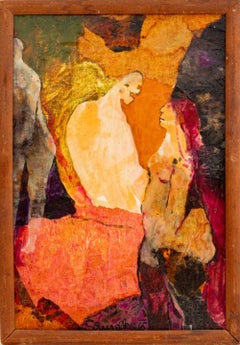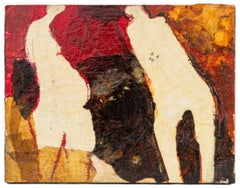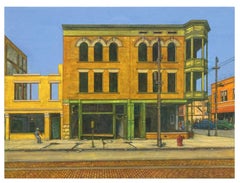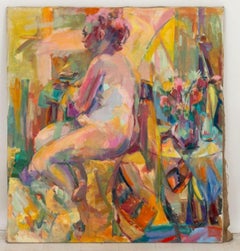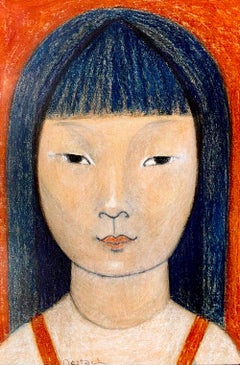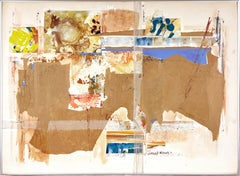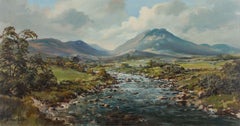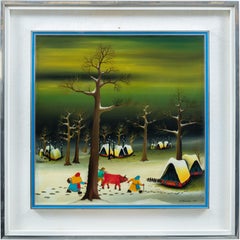Post-War Paintings
1980s Post-War Paintings
Gouache, Illustration Board, Laid Paper
1940s Post-War Paintings
Canvas, Oil, Illustration Board
1940s Post-War Paintings
Canvas, Oil
1980s Post-War Paintings
Canvas, Cotton, Oil
Late 20th Century Post-War Paintings
Canvas, Oil
1980s Post-War Paintings
Canvas, Oil
1950s Post-War Paintings
Canvas, Wood, Oil
1960s Post-War Paintings
Masonite, Oil
1950s Post-War Paintings
Oil, Canvas
1940s Post-War Paintings
Linen, Oil
1960s Post-War Paintings
Canvas, Oil
1980s Post-War Paintings
Oil, Board
20th Century Post-War Paintings
Canvas, Oil
20th Century Post-War Paintings
Canvas, Oil
Late 20th Century Post-War Paintings
Oil
20th Century Post-War Paintings
Canvas, Oil
1960s Post-War Paintings
Masonite, Oil
1980s Post-War Paintings
Oil, Canvas
1990s Post-War Paintings
Canvas, Lacquer, Oil, Stretcher Bars
Mid-20th Century Post-War Paintings
Canvas, Oil
20th Century Post-War Paintings
Oil, Panel
20th Century Post-War Paintings
Paper, Ink, Gouache
Mid-20th Century Post-War Paintings
Oil
1970s Post-War Paintings
Acrylic, Board
21st Century and Contemporary Post-War Paintings
Canvas, Polystyrene, Wood, Paper, Oil, Stretcher Bars
Mid-20th Century Post-War Paintings
Canvas, Oil
Late 20th Century Post-War Paintings
Mixed Media, Oil, Etching
1980s Post-War Paintings
Canvas, Ink, Acrylic, Rice Paper
20th Century Post-War Paintings
Canvas, Oil
1970s Post-War Paintings
Masonite, Oil
Mid-20th Century Post-War Paintings
Ink, Gouache
1970s Post-War Paintings
Canvas, Oil
Mid-20th Century Post-War Paintings
Ink, Gouache
1970s Post-War Paintings
Canvas, Oil, Stretcher Bars
Early 2000s Post-War Paintings
Canvas, Acrylic, Stretcher Bars
1950s Post-War Paintings
Acrylic, Gouache, Lithograph
1940s Post-War Paintings
Cotton Canvas, Oil
Mid-20th Century Post-War Paintings
Canvas, Oil
Mid-20th Century Post-War Paintings
Canvas, Oil
20th Century Post-War Paintings
Canvas, Oil
Mid-20th Century Post-War Paintings
Oil, Canvas
Mid-20th Century Post-War Paintings
Ink, Gouache
1970s Post-War Paintings
Canvas, Oil, Stretcher Bars
1970s Post-War Paintings
Canvas, Oil, Stretcher Bars
1960s Post-War Paintings
Lacquer, Paper, Oil Crayon, Mixed Media, Oil
1960s Post-War Paintings
Oil, Canvas
1990s Post-War Paintings
Canvas, Oil
Mid-20th Century Post-War Paintings
Oil, Wood Panel, Mixed Media
21st Century and Contemporary Post-War Paintings
Canvas, Acrylic, Stretcher Bars
Mid-20th Century Post-War Paintings
Ink, Gouache
1940s Post-War Paintings
Oil, Burlap
1970s Post-War Paintings
Illustration Board, Laid Paper, Watercolor
1970s Post-War Paintings
Canvas, Oil, Illustration Board
Mid-20th Century Post-War Paintings
Mixed Media, Cardboard
1980s Post-War Paintings
Canvas, Cotton, Oil
Late 20th Century Post-War Paintings
Acrylic, Laid Paper
1940s Post-War Paintings
Linen, Oil
20th Century Post-War Paintings
Oil, Panel
1960s Post-War Paintings
Canvas, Wood, Acrylic
1930s Post-War Paintings
Canvas, Oil
